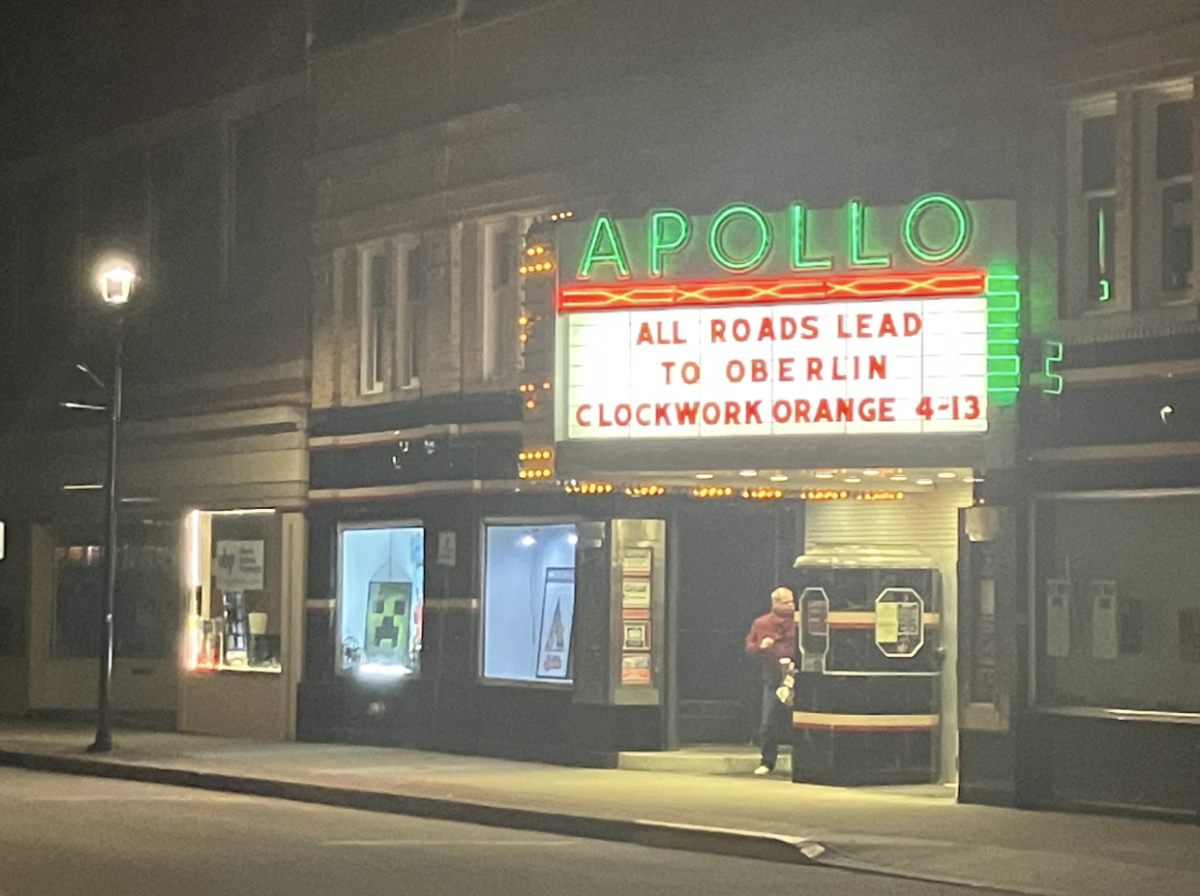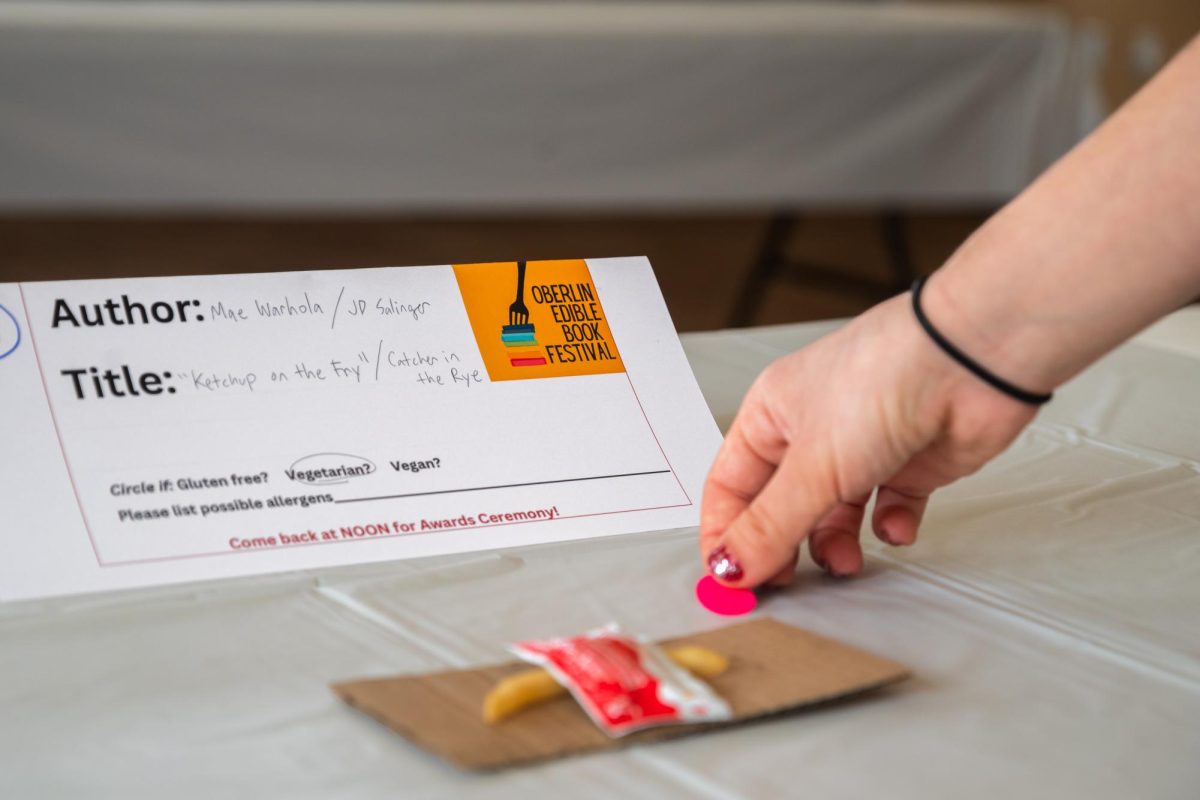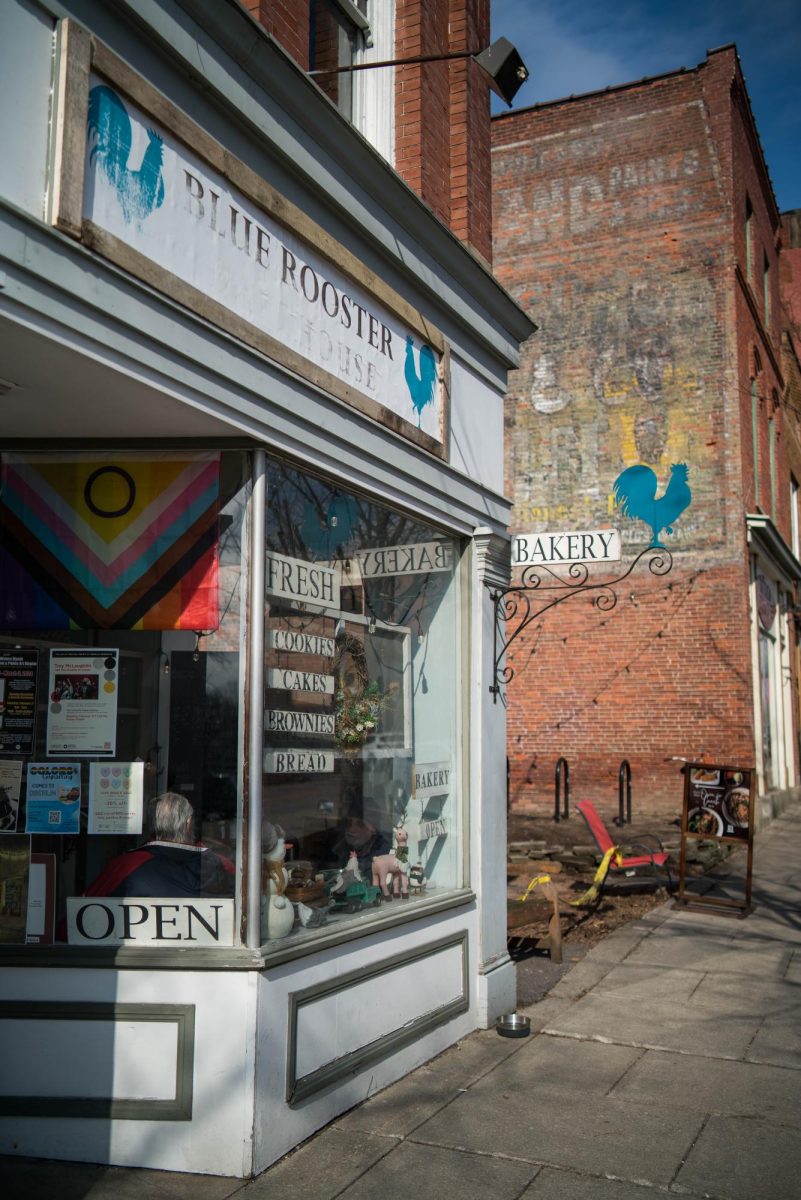From an ancient version of funnel cake to a simple pot of porridge, Roman cuisine is familiar, extravagant, and downright wacky. But it’s more than just a weird recipe or two; it keys scholars into specific cultural and social changes.
This is what Andrew Donnelly, an assistant professor of History at East Texas A&M University, has devoted his career to. He visited Oberlin on Monday to give an engaging and fascinating talk titled “Steaming Pots of Porridge: Cooking, Cato, and Conservatism in Republican Rome.”
He started his presentation by asking, “Do you have a favorite mug?” This simple inquiry opened up a world of comparison between modern food vessels and ancient ones. Donnelly then featured Friends, the beloved ’90s sitcom, pointing out the bowl-like mugs that the characters drink their coffee out of. He explained that it defined the aesthetics of a certain time and era. He related this to his scholarship, saying that food and cooking involve “broad swaths” of a population and that we can see cultural and social change in late antiquity through food and even ceramic vessels.
Visiting Assistant Professor in Classics and Thomas F. Cooper Post-Doctoral Fellow Sarah Wilker, a longtime colleague of Donnelly, organized the event.
“Dr. Donnelly is a very, very engaging speaker and one that is particularly good at making very mundane objects important to us,” Wilker said.
Donnelly began the talk with his study on ceramics, focusing on 200 BCE to 700 CE, he examined two very important pottery dishes, the patina and the olla. The patina was comparable to a casserole dish meant for roasting and frying foods, and the olla was a large pot, commonly used to cook porridge.
Wilker noted how changes in the popularity of certain ceramics may give clues into the movement and assimilation of ethnic groups.
“What is most interesting to me is the way in which different ceramic forms denote or tell us how there are different community groups coming together and meeting one another and sharing practices,” Wilker said. “And what’s most interesting and striking to me is when those disappear quite rapidly. So, you have situations like one of the ones Dr. Donnelly was describing at the beginning of his talk where if you have this certain shape of pottery, it means you have Romans, or you have Italians coming to an area. … When those vanish, that seems to indicate to us that those forms or perhaps those people are leaving. If those people aren’t leaving, then they’re transitioning to cooking in another way. And what does that mean about their cultural practices?”
When reflecting on the talk, Wilker built on the patina’s significance, referencing The Rule of the Master, an ancient text describing daily life for monks, with little bits of cooking information sprinkled in.
“It’s sort of a hallmark of aristocratic dining perhaps, but then it’s also used in this non-elite context,” Wilker said. “Some of that just changes over time, like it became very popular in monastic contexts.”
Texts like The Rule of the Master help scholars understand how Rome endures after itself; although its standard of morality evolves, snippets from ancient texts and shards of ceramics reveal the roots of a type of dining long thought lost.
In his talk, Donnelly explained that Roman society is comparable to modern U.S. culture, where change, similar to the expansion of the Roman empire and diversification of its population, can incite certain rhetorics to gain popularity. Donnelly used De Agri Cultura — “On Farming” — the oldest surviving work of Roman prose, as an example of this phenomenon. The author, Cato the Elder, a Roman soldier, politician, and historian expressed his support for tradition and conservatism through the offhand comments he wrote about food, condemning the decadence and cultural change happening in late Rome. Donnelly suggested that the texts for food and recipes, in general, became more conservative, emphasizing traditional foods instead of new ones.
The breadth of Donnelly’s research was evident from the talk. He consulted farming manuals, history, lives of saints, sermons, law codes, medicinal texts, epistles, cookbooks, pottery, and even animal bones.
“From work with the animal remains, you can study how the bones were cut,” Donnelly said.
“What does that mean for…” is the driving question around studying these Roman foodways, and even people who don’t study Rome are interested in learning more. College third-year Annie Wyner felt that the talk provided an accessible overview of a complex historical topic.
“I’m a Greek major, so I haven’t studied a lot about Rome, and honestly, that’s not something that I’m super interested in, but he made it very engaging and interesting,” Wyner said. “I really liked the way that [Donnelly] related everything back to modern day terms that we can understand. I think he took a topic that could be very opaque for some people and made it very interesting.”
The talk concluded by speculating about the birth of the mythology of foodways. Donnelly noted that how we discuss food and what we eat are very different, but it is important to know about both. Through the study of pottery and a slew of ancient texts, we get to watch people similar to ourselves using a patina for communal eating instead of aristocratic settings, just like how we might use that bowl-like Friends mug for soup instead of coffee, as Wilkins noted at the start of his talk.
“It’s one of the reasons why that work is so exciting, right?” Wilker said. “It gives us a glimpse [into the lives] of people.”







